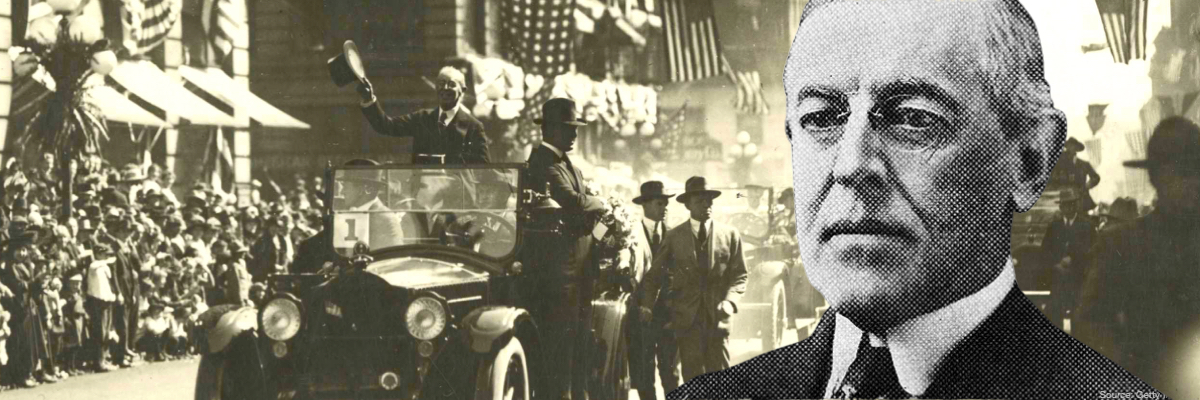When Woodrow Wilson set out on his 10,000-mile Western Tour in September 1919, he hoped to arouse the natiin to support the League of Nations–and force the Senate to ratify the treaty to end the Great War.
As he spoke before throngs on this “swing around the circle”–from the Midwest to the Plains States to the Pacific Northwest, down the coast of California, and then inward to Nevada, Utah, Wyoming, and Colorado–he won some followers. But the votes in Washington turned against him. Toward the end of the trip, in California, he found his groove. But by the time he got to Colorado he was spent. He collapsed after his historic address in Pueblo, Colorado. The tour was cut short.
Back in Washington, he suffered a massive stroke and refused to compromise on any aspect of the treaty. Twice, the Senate rejected the treaty. Wilson hoped for a massive show of support in 1920 but a treaty opponent, Warren Harding, won a landslide victory.
Even without the U.S., the League of Nations began operations in 1920. It laid the groundwork for the cirrent world order: the United Stations, NATO, European Union, and more.
Now, as the global order comes under assault, the story of Wilson’s campaign for the League of Nations is more relevant than ever.

